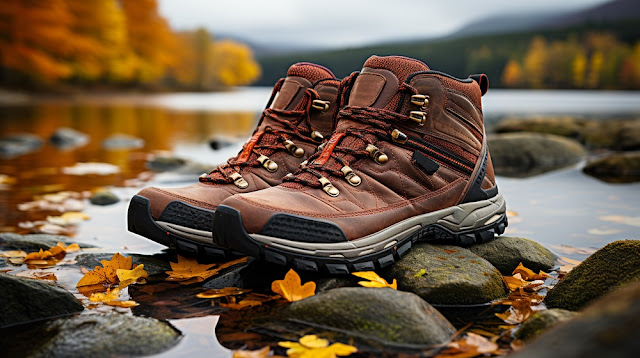What Climbing Gear to Take for Alpine Climbing: A Complete Guide for Beginners
If you're new to alpine climbing, packing the right gear can seem daunting. With so many specialized items to choose from, it's hard to know what's absolutely necessary versus optional.
This straightforward guide will walk you through the climbing gear and equipment needed to stay safe and comfortable on alpine climbs.
We'll also provide tips on where to find deals on quality climbing shoes sale items.
Essential Alpine Climbing Gear
Here's a checklist of the core climbing gear you'll need for alpine climbing routes:
Clothing
Base layers - moisture-wicking synthetic or merino wool long underwear tops and bottoms
Insulating layers - fleece or down jackets and pants
Shell layers - waterproof-breathable outer jackets and pants
Socks - wool or synthetic socks
Gloves - lightweight liner gloves and insulated outer gloves
Footwear
Mountaineering boots - stiff, crampon-compatible boots
Approach shoes - light hikers or trail runners
Climbing Equipment
Harness - adjustable fit climbing harness with gear loops
Helmet - UIAA certified climbing helmet
Crampons - steel crampons match boot type and size
Ice axe - straight shaft mountaineering axe
Carabiners - locking and non-locking carabiners
Climbing rope - 50m-60m single dynamic rope
Other Essentials
Sunglasses - 100% UVA/UVB blocking with side shields
Headlamp - high-lumen LED headlamp
Backpack - 30-50 liter alpine climbing pack
Sleeping bag - 0°F to 20°F mummy bag
First aid kit - lightweight essentials kit
Helpful Additions for Alpine Climbing
Here are some optional extras to make your alpine climbing experience more enjoyable:
Belay parka - super warm puffy down jacket for belaying
Gaiters - keep snow and debris out of boots and crampons
Helmet liner - fleece liner adds warmth under the helmet
Hand warmers - air-activated warmers for frigid days
Foam sleeping pad - insulates from the cold ground
While not mandatory, these items enhance comfort and safety in harsh alpine conditions.
Where to Find Deals on Quality Climbing Gear
Outfitting yourself for alpine climbing can get expensive. Here are some tips to save money:
Shop end-of-season sales in spring and fall
Buy used gear from reputable consignment shops
Join climbing club gear swap groups
Take advantage of holiday sales and coupons
Sign up for retailer email lists for access to limited deals
Buy last year's model - the tech is often the same
With this complete beginner's guide, you'll know exactly what climbing gear and equipment to pack for your first alpine adventures. Just don't forget the sunscreen!
Frequently Asked Questions (FAQs)
Q: Can I use regular hiking boots for alpine climbing?
A: Regular hiking boots are not recommended for alpine climbing. Mountaineering boots provide the necessary stiffness and crampon compatibility required for technical alpine terrain.
Q: How do I choose the right size crampons?
A: Crampons should be chosen based on the type and size of your mountaineering boots. Consult the manufacturer's sizing guide or seek advice from a reputable gear shop to ensure a proper fit.
Q: Do I need to bring a rope for every climb?
A: It is generally recommended to bring a climbing rope on most alpine climbs for safety and protection. However, there may be certain routes where a rope is not necessary.
Q: What is the difference between a climbing helmet and a regular helmet?
A: Climbing helmets are specifically designed to withstand impacts from falling rocks or debris. They have a hard shell and are certified by the UIAA (International Climbing and Mountaineering Federation) to meet safety standards for climbing activities.
Q: Are there any specific considerations for climbing in cold weather?
A: Climbing in cold weather requires additional layers of insulation, including warmer base layers, thicker gloves, and a belay parka for added warmth during breaks. It's also important to protect yourself from frostbite by covering exposed skin and keeping extremities warm.
Q: What should I do if I encounter bad weather while climbing?
A: If you encounter bad weather while climbing, it is important to prioritize safety. Seek shelter, assess the situation, and consider descending if conditions become unsafe. Always check the weather forecast before heading out and be prepared to change plans if necessary.
Q: How often should I replace my climbing gear?
A: It is generally recommended to replace climbing ropes every 5-7 years, harnesses every 5 years, and helmets every 10 years. Other gear, such as carabiners and slings, should be retired if they show signs of significant wear or damage.





Comments
Post a Comment